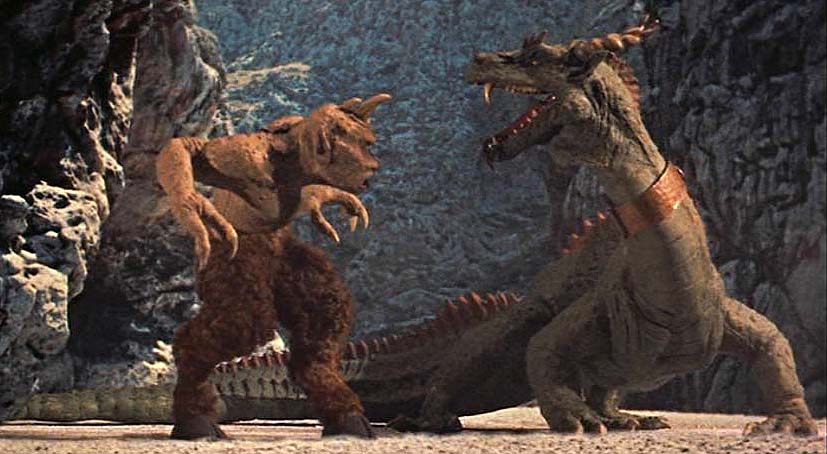A part of me wishes I hadn't agreed to see Iron Man 3 this evening, at least after reading the announcement of Ray Harryhausen's passing earlier this morning. At first, I just wanted to dig into my DVD collection of his films and spending several hours marveling at his amazing work.
But then, I realized that spending the evening watching a big budget, CGI blockbuster is a tribute, as most of the people working on the effects team are likely Harryhausen fans as well, and spending time watching their work is a living testament to the monsters he created.
And it's no wonder so many effects artists are still inspired by his work. Ray Harryhausen didn't make monsters, he brought them to life. In all his films, the creatures were as real as their human counterparts. They had personalities and motivations, they felt sorrow and pain. They weren't rubber suited actors, or real animals filmed in a way to make them look gigantic. Harryhausen's monsters delivered performances so touching and nuanced that one suspects their creator was an actor at heart.
It's not hard to see this in the films he's left behind. Who can forget the death of Medusa in the original Clash of the Titans, the skeleton from The Seventh Voyage of Sinbad that practically cackles during the fight, or the agony endured by the Ymir in 20 Million Miles to Earth? These are unforgettable moments in cinema, which (to paraphrase Tom Hanks) are as defining as Citizen Kane or Casablanca.
I'm sure a lot of people are sharing their favorite Harryhausen moment, so here's mine. It's the Children of the Hydra, from Jason and the Argonauts. Damn, I still get chills just thinking about it.
This wasn't the first time Harryhausen used skeletons in a film, but it was (in my mind) his most effective. Grown out of the ground by an evil priest, the skeletons are almost robotic as they advance on Jason and his men. At least until the scream like bats out of hell and attack, which is.....
Oh, just watch the YouTube clip. Enjoy, because it is amazing work.
Though the craft of stop motion (Harryhausen called his technique of combining human and monster actors Dynamation) has been replaced by computer generated effects, any special effects artists still works under the shadow of Ray Harryhausen. Because no matter how often this scene has been homaged in films, such as Army of Darkness or the remake of The Mummy, no one has made it more effective.
Goodbye, Mr. Harryhausen. I never had the privilege to meet you in person and tell you how much your films meant to me as a child, and continue to hold a place in my heart many years later. And that's probably a good thing, as I'm sure I would have come off like a rambling idiot. But I will miss you, as the world has become a duller, less wondrous place without you.


